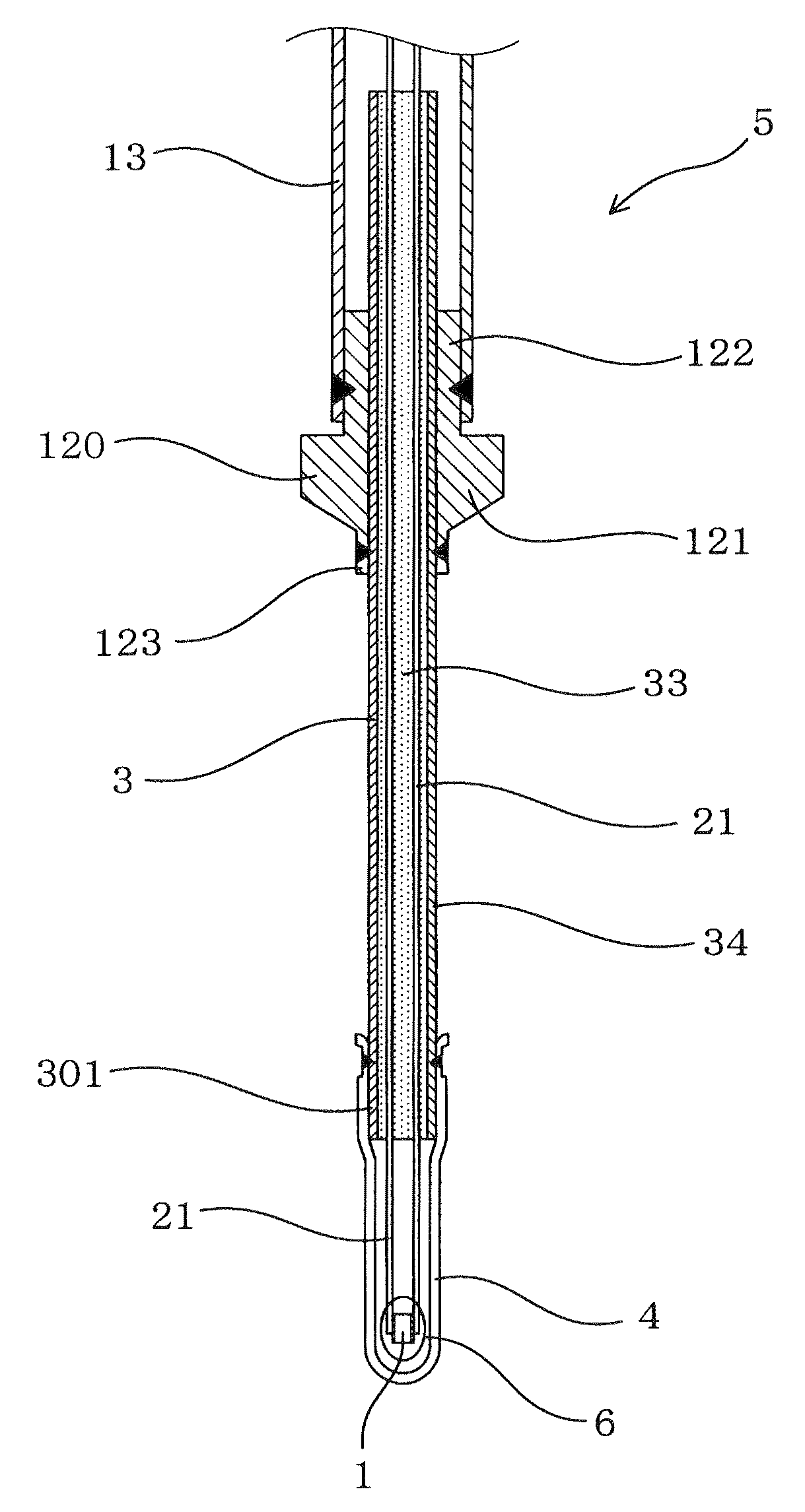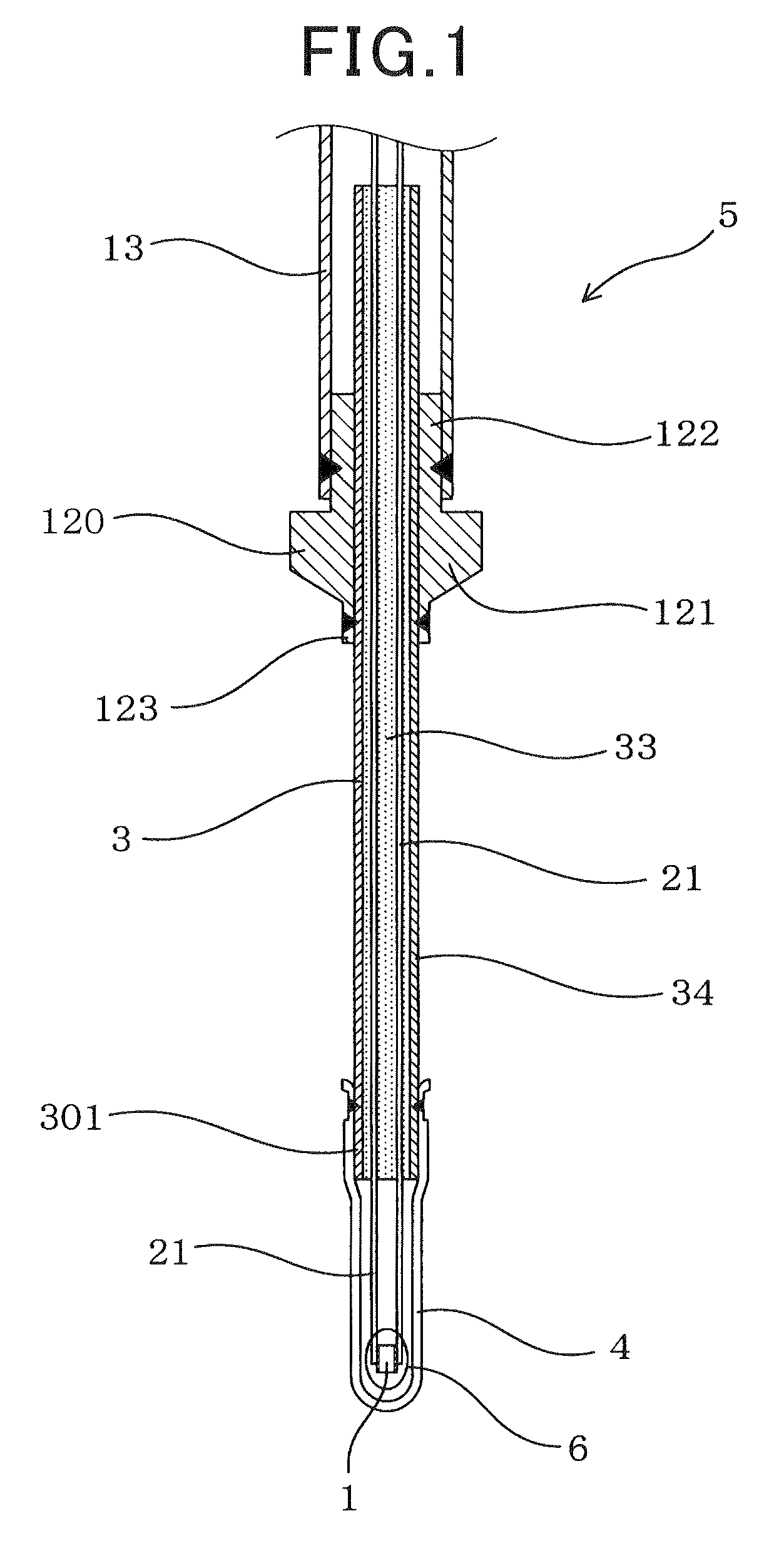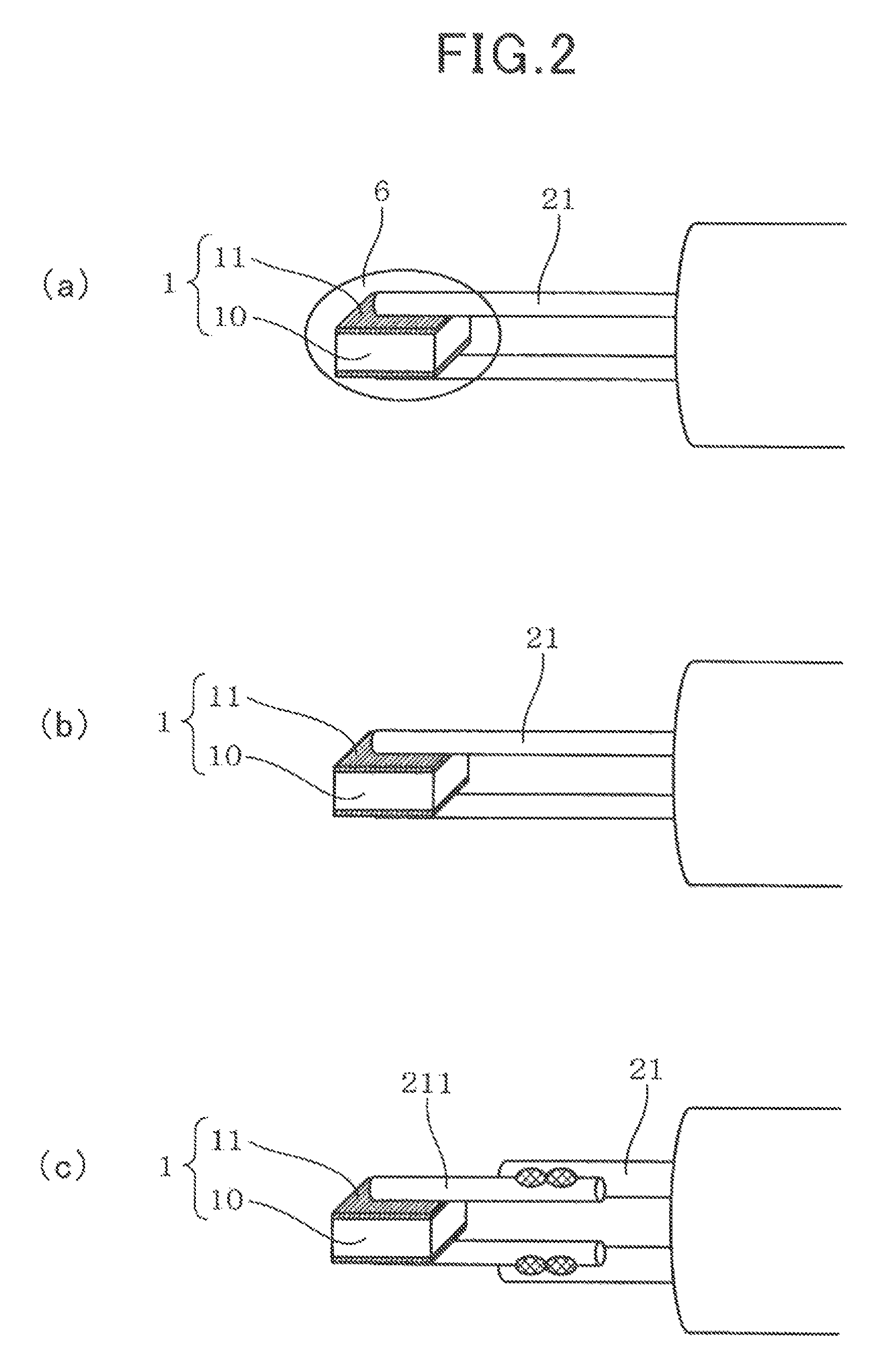Temperature sensor element, method for manufacturing same, and temperature sensor
a technology of temperature sensor and manufacturing method, which is applied in the direction of positive temperature coefficient thermistors, instruments, heat measurement, etc., can solve the problems of high-temperature oxidizing temperature sensors, and achieve the effect of suppressing crack generation, high heat resistance as a temperature sensor, and reducing the difference in linear expansion coefficien
- Summary
- Abstract
- Description
- Claims
- Application Information
AI Technical Summary
Benefits of technology
Problems solved by technology
Method used
Image
Examples
experimental example 1
[0104]First, samples X0 and X1 were prepared for evaluation.
[0105]For sample X1, i.e. a sample of the temperature sensing element of the present invention, the following mixture material was prepared as the thermistor 10. The mixture material was prepared by blending 63.4 vol % of silicon nitride (Si3N4) powder having an average grain size of 0.7 μm, 30 vol % of silicon carbide (SiC) powder having an average grain size of 0.2 μm, 6 vol % of yttrium oxide (Y2O3) powder, as a sintering aid, having an average grain size of 0.5 μm, and 0.6 vol % of TiB2 powder, as metal conductors, having an average grain size of 0.4 μm, followed by mixing for 24 hours with ethanol using a ball mill.
[0106]Then, the mixture material was molded by means of uniaxial pressing at a pressure of 20 MPa, followed by performing hot pressing for one hour under a N2 atmosphere at a temperature of 1850° C. and at a pressure of 20 MPa. Thus, a parallelepiped (plate-like) sintered body was obtained as the thermistor ...
experimental example 2
[0117]First, samples X1 to X10 were prepared for evaluation.
[0118]For sample X1, the following mixture material was prepared as the thermistor 10. The mixture material was prepared by blending 63.4 vol % of silicon nitride (Si3N4) powder having an average grain size of 0.7 μm, 30 vol % of silicon carbide (SiC) powder having an average grain size of 0.2 μm, 6 vol % of yttrium oxide (Y2O3) powder, as a sintering aid, having an average grain size of 0.5 μm, and 0.6 vol % of TiB2 powder, as metal conductors, having an average grain size of 0.4 μm, followed by mixing for 24 hours with ethanol using a ball mill.
[0119]Then, the mixture material was molded by means of uniaxial pressing at a pressure of 20 MPa, followed by performing hot pressing for one hour in a N2 atmosphere at a temperature of 1850° C. and at a pressure of 20 MPa. Thus, a parallelepiped (plate-like) sintered body was obtained as the thermistor 10, with its dimension being 1.0 mm in depth×1.0 mm in width×0.5 mm in height....
experimental example 3
[0142]In the present experimental example, characteristics changes of temperature sensing elements are discussed, in the case where the metal electrode has a different mixing ratio of Cr and Fe. In the present experimental example, as will be shown in Table 2 discussed later, seven different temperature sensing elements (samples X9 to X15) were prepared using alloy powders having a different mixing ratio of Cr and Fe. The samples were each prepared in a manner similar to sample X1 described above, except that the material of an alloy paste forming the metal electrode 11 is different.
[0143]The temperature sensing elements were prepared by printing a paste of Cr-5Fe alloy powder in sample X9, a paste of Cr-10Fe alloy powder in sample X10, a paste of Cr-25Fe alloy powder in sample X11, a paste of Cr-40Fe alloy powder in sample X12, a paste of Cr-55Fe alloy powder in sample X13, a paste of Cr-70Fe alloy powder in sample X14, and a paste of Cr-85Fe alloy powder in sample X15.
[0144]Simila...
PUM
| Property | Measurement | Unit |
|---|---|---|
| grain size | aaaaa | aaaaa |
| temperature | aaaaa | aaaaa |
| temperature | aaaaa | aaaaa |
Abstract
Description
Claims
Application Information
 Login to View More
Login to View More - R&D
- Intellectual Property
- Life Sciences
- Materials
- Tech Scout
- Unparalleled Data Quality
- Higher Quality Content
- 60% Fewer Hallucinations
Browse by: Latest US Patents, China's latest patents, Technical Efficacy Thesaurus, Application Domain, Technology Topic, Popular Technical Reports.
© 2025 PatSnap. All rights reserved.Legal|Privacy policy|Modern Slavery Act Transparency Statement|Sitemap|About US| Contact US: help@patsnap.com



